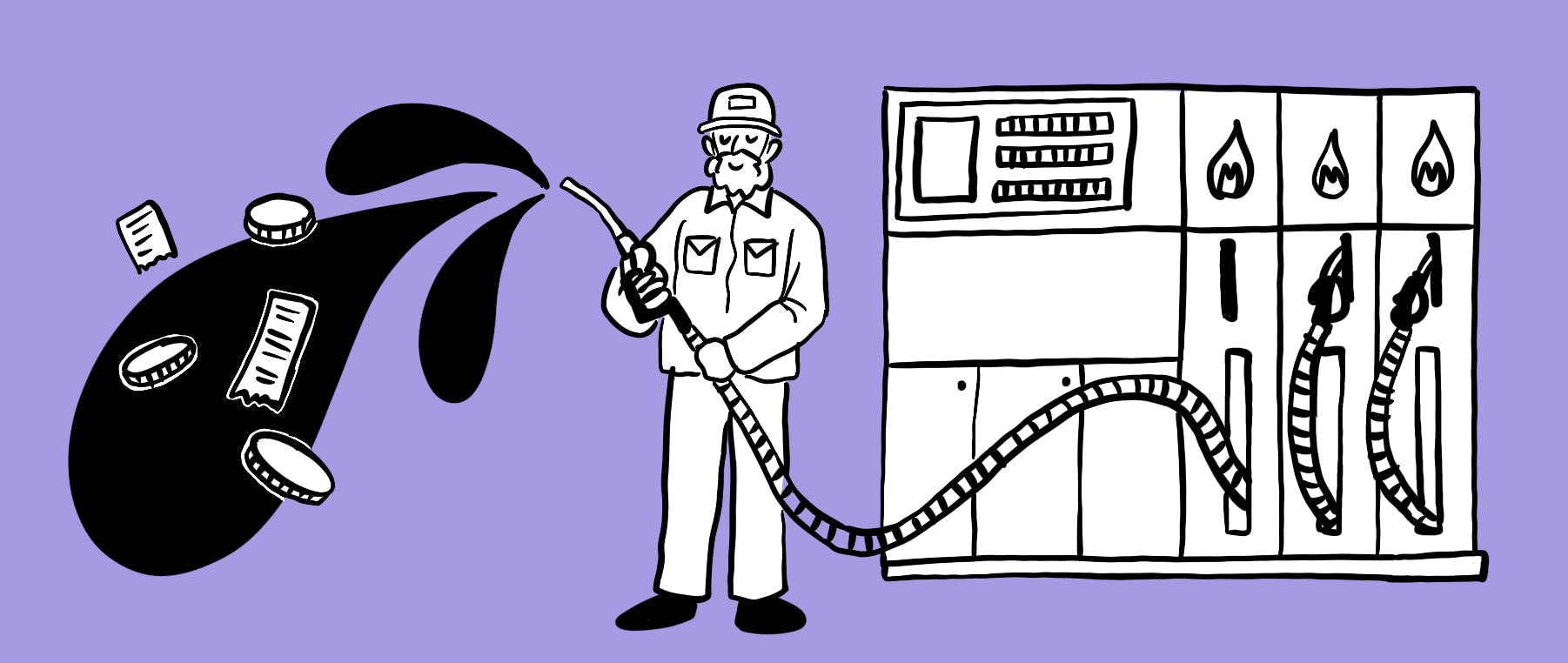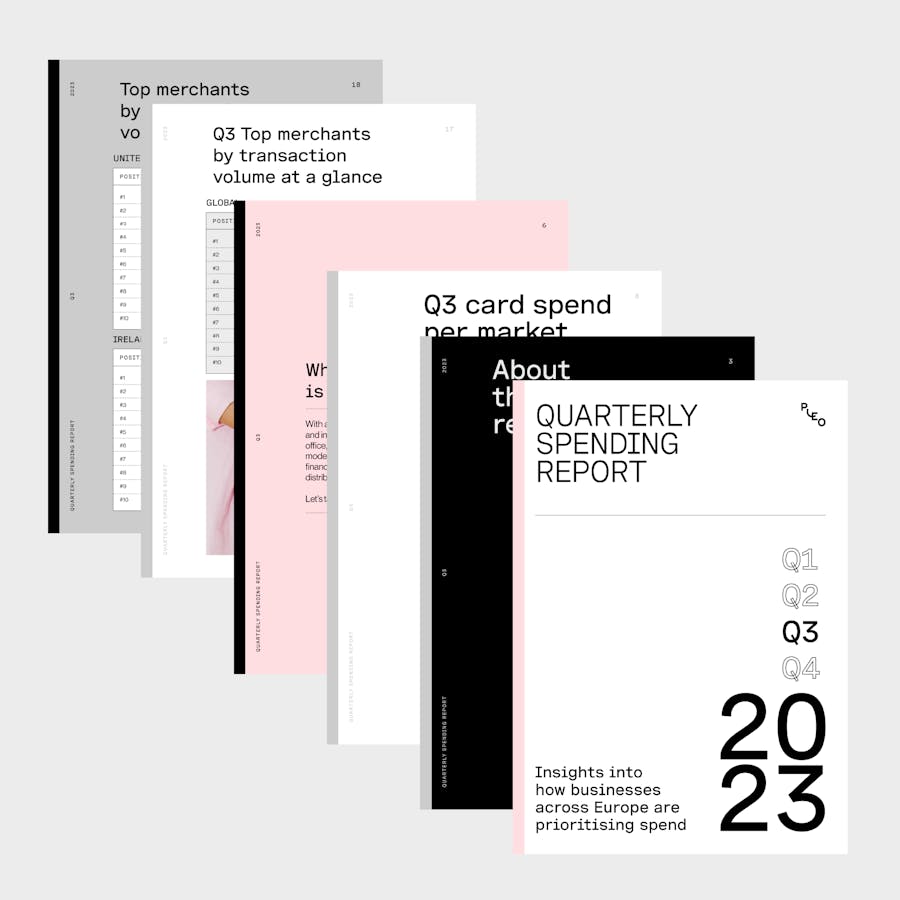
What businesses need to know about HMRC fuel rates for private cars in 2024
You may already know that if your employees use their personal cars for business purposes (beyond driving to the office every day) then they’re eligible for reimbursement. You may also know you can then claim the reimbursement you pay them as a tax-deductible expense.
But did you know when it comes to private cars it's not the advisory fuel rate that the government advises for reimbursement? HMRC fuel rates for private cars 2024 are advised through their mileage allowance scheme, which takes into account a wider variety of costs.
Keep reading to see how the mileage allowance scheme works, and how it differs from the fuel advisory rates.
Content overview
- Going the extra mile for your people: the mileage allowance scheme
- What’s the difference between mileage allowance and advisory fuel rates?
- Why are advisory fuel rates not applicable to private cars?
- HMRC fuel rates for private cars 2024: Mileage allowance payment rates
- How to claim my mileage allowance payment?
- Is your business eligible for the advisory fuel rates?
- What are the current advisory fuel rates?
- The future of advisory fuel rates
- A smarter way to approach business travel
Going the extra mile for your people: the mileage allowance scheme
Mileage allowance payments are intended to reimburse employees who drive their own private vehicles for business purposes.
Unlike the advisory fuel rates, this scheme covers more than just the cost of fuel. The mileage allowance scheme offers a higher rate per mile to cover the general wear and tear that reduces the value of a car over time.
For example, an employee who often has to drive long distances for business journeys may end up having to replace their tires more often, an expense that is not covered by the advisory fuel rate.
What’s the difference between mileage allowance and advisory fuel rates?
In a technical sense, think of the mileage allowance scheme as covering all costs associated with owning a car, including repairs, maintenance and the cost of fuel. Whilst the advisory fuel rate is only covering the cost of fuel.
Advisory fuel rate | Mileage allowance scheme |
|---|---|
Company car | Private car |
Between 14p and 26p per mile (dependent on engine size, fuel type and vehicle) | 45p per mile for all cars and vans |
Guidelines updated quarterly by the government based on the cost of fuel | Guidelines updated annually before the start of each tax year |
Why are advisory fuel rates not applicable to private cars?
With a company car, the cost of the vehicle and its deterioration over time is covered by the business. Meanwhile, if you’re a PAYE employee or freelancer who uses your car for a blend of personal and professional reasons, the cost of the vehicle and its deterioration isn’t covered by a company.
These costs are also not something an individual can claim through other tax schemes in the same way a business can, as they probably use the car for a blend of personal and business travel. So when it comes to changing the tyres they won’t be able to claim that cost as a business expense, yet using their car for business purposes has significantly contributed to it needing new tyres.
HMRC fuel rates for private cars 2024: Mileage allowance payment rates
Rates vary by vehicle and the number of miles driven. If you drive a high volume of company-related trips in any given year, there is a secondary rate for every mile above the initial 10,000.
Vehicle type | First 10,000 miles | Above 10,000 miles |
|---|---|---|
Car or van | 45p | 25p |
Motorbike | 24p | 24p |
Bicycle | 20p | 20p |
Mileage allowance eligibility criteria
Generally speaking, the mileage allowance payment (MAP) applies to all business-related journeys in a privately owned vehicle that are not to your permanent office.
In this instance, a privately owned vehicle means one that is not owned by the company the business travel is being carried out for. For example driving to client meetings, conferences, or temporary office spaces.
Be aware you are not allowed to claim for:
- Reimbursement for parking tickets or tolls
- Journeys that do have some stops for work purposes, but their main goal is related to personal matters
- Journeys to and from your permanent office
Fortunately, HMRC has published an exhaustive list of approved instances where you are able to claim the MAP.
So while many companies are choosing to buy train tickets for their people, this program ensures that private car owners won’t miss out.
How to claim my mileage allowance payment?
For employees, the only instance where they will need to contact HMRC is if the workplace provides a lower MAP rate than the standard. In this case, people can claim the rest as part of their personal expenses and use it to offset the tax bill.
For example, if a business only offers their employee 30p per mile for use of their private car, then that employee can then claim an extra 15p per mile from HMRC against their tax bill.
It’s important to have everybody tracking their mileage and keeping receipts, as these will become integral in the company records to prove the mileage expenses. Without documentation, the business may not be allowed to recoup the money it has spent on fuel as part of the tax process.
Make it easy for employees to collect and keep their fuel receipts with a business fuel card.
By snapping their proof of purchase in-app, your people will find it easy to get reimbursed without a lengthy and tedious process. Getting your people back on the road and tracking their mileage exactly. 🚗
Is your business eligible for the advisory fuel rates?
HMRC’s advisory fuel rates have two explicit purposes:
- To reimburse your employees for filling up the gas tank on company cars when making trips for business
- To recoup the value of fuel used by employees using company cars for private trip purposes
As long as you’re paying (or receiving) the correct rates, the advisory rates will not contribute to taxable profit, and your business shouldn't be required to pay for extra national insurance class 1A.
Using advisory rates means that cash will be immediately available for employees to use for otherwise expensive fuel.
What are the current advisory fuel rates?
As of 1st December 2023, the fuel advisory rates for petrol vehicles in 2024 are as follows:
Engine size (cc) | Advisory fuel rate (per mile) |
|---|---|
Up to 1400 | 14p |
1401- 2000 | 16p |
2000+ | 26p |
As of 1st December 2023, the fuel advisory rates for diesel vehicles are as follows:
Engine size (cc) | Advisory fuel rate (per mile) |
|---|---|
Up to 1600 | 13p |
1601- 2000 | 15p |
2000+ | 20p |
As of 1st December 2023, the fuel advisory rates for LPG vehicles are as follows:
Engine size (cc) | Advisory fuel rate (per mile |
|---|---|
Up to 1400 | 10p |
1401- 2000 | 12p |
2000+ | 18p |
From the 1st December 2023,, the advisory electric rate for fully electric cars has risen from 8p to 9p per mile. This electric rate will also be reviewed quarterly from 1 December 2022. With new sustainable travel legislation on the horizon, this part of the scheme may adapt in the near future.
The specified rates are only recommendations. If, for example, your vehicle is more efficient than average, you can use lower fuel rates. But make sure to get the blessing of HMRC before you start messing with the rates.
The future of advisory fuel rates
OK, you’ve got an idea about the 2024 advisory fuel rates. But is there a chance that advisory fuel rates will increase in the future?
Going by the cost of living, you can almost 100% expect advisory rates to increase over the coming months. We’ve seen huge price increases for commodities like petrol, diesel and gas. Since the advisory rates are supposed to match the price of fuel exactly, it’s easy to see why we should expect the rates to rise.
However, it’s also important to consider where the money comes from. As a government resource (rather than a company one), the funding for advisory fuel comes from taxes which means that the allocation amount probably has a cap.
A smarter way to approach business travel
At Pleo our fuel card for business makes it easy to keep your team on the road and to measure their mileage exactly, whether it’s the mileage allowance scheme or advisory fuel rate. Save time on paperwork with travel data you can trust.

Benchmark your company’s spend against real-time industry data
Leverage insights from billions of euros of aggregated quarterly spend across 30,000+ Pleo customers
Powered in the UK by B4B partnership
You might enjoy...

Just the ticket: How our customers travel with Pleo
Planes, trains, automobiles and ferries – all the ways to travel for business with Pleo.

HMRC mileage rates for 2024: The cost of going the extra mile
Mileage claims are a great way for companies to help their employees reduce tax bills. Get the lowdown on the HRMC mileage rates for the yea...
.png?ixlib=gatsbyFP&auto=compress%2Cformat&fit=max&dpr=2&w=373)
How Pleo and TravelPerk help Luno manage business travel seamlessly
We spoke to Luno to learn how the magic combination of Pleo and TravelPerk has removed the headache of business trips.
